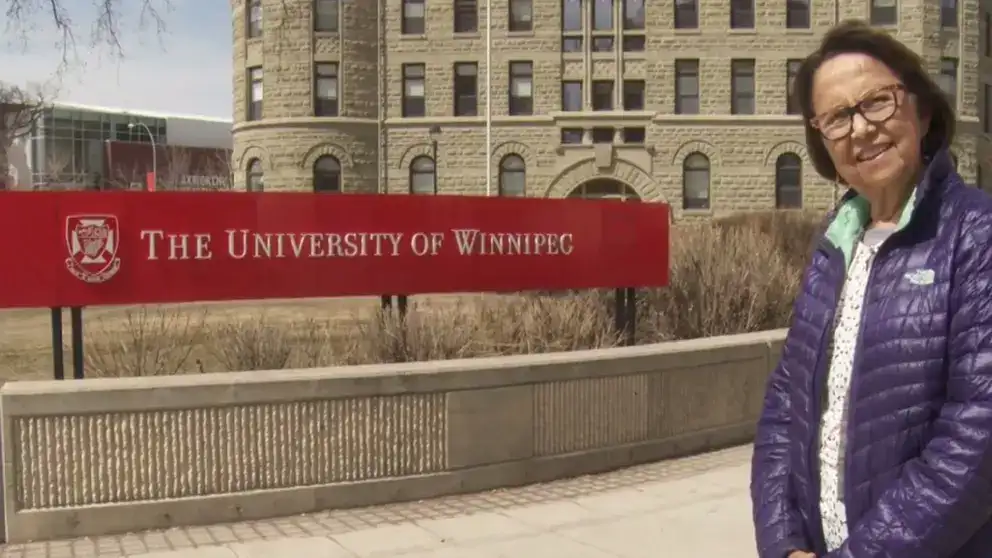Like many women, Esther Sanderson was caught off guard by heart disease. Sharp abdominal pains set in while she was driving to Regina from Prince Albert for a meeting in October 2004. But Esther, a member of the Beaver Clan who now lives at the Opaskweyak Cree Nation, didn’t think it was anything life threatening.
Only as the pain increased did Esther phone a friend, who is the nursing director at First Nations University of Canada. She convinced Esther that something was seriously wrong and drove out to the highway to take her to Victoria Hospital in Prince Albert. At the hospital Esther’s electrocardiogram (ECG) came back normal. But heart attack symptoms can be more subtle in women than men. Her friend insisted the test be repeated.
A third ECG confirmed that Esther was in severe crisis. She had a blood clot and was having a heart attack that needed more aggressive treatment than she could get in Prince Albert. Esther was immediately taken by ambulance to Saskatoon and then by medevac flight to Edmonton’s University Hospital.
A life-and-death wait
Cardiologists there confirmed that her heart was so badly damaged that she would need a heart transplant to survive. She was placed on a heart-lung machine to keep blood pumping through her body. But it was a temporary solution.
In less than two weeks, Esther would need to come off the machine and receive a heart transplant.
For 12 days, her daughter and son, sisters, brothers, nephews and nieces kept watch in the cardiac unit waiting room, some acting as advocates on her behalf. The day before she was scheduled to come off the machine, they learned a donor heart had been located.
Culture and health
Since her transplant, Esther has met other women living with heart disease. She’s learned that many women — especially Indigenous women — don’t have the same success with their treatments.
“Too often people give up and die in despair or are sent home with Aspirins where they sometimes die,” Esther says. “The care and treatment they receive at the very beginning is crucial. If that doesn’t work well, they are reluctant to return, reluctant to question or challenge.”
Today, Esther is director of Aboriginal languages and culture at University College of the North in The Pas, Man. Looking back at her own health crisis, she sees a connection to the decline in practices of Indigenous traditional ways of keeping healthy in the community.
Taking care of this gift is a sacred responsibility.
“Living a healthy lifestyle depends upon living life in a wholistic manner, taking care of the physical, mental, spiritual and emotional parts of oneself,” she says. “Many of our spiritual and cultural practices were legally outlawed by the government but when that happened, we were at least able to still feed families in a healthy way through traditional foods.”
Then that changed too, Esther says. She recalls a time when she wanted to buy a piece of watermelon, from a Northern Store located at a northern reserve, only to learn that it cost $13. A bag of chips and pop cost only a dollar.
“Many communities don’t practice spiritual and cultural ways, along with not eating in a healthy way. The reasons vary but mostly it’s due to not being able to live off the land anymore.”
Indigenous women, Esther says, can feel the effects more because they are still responsible for feeding and taking care of families. “Through no fault of our own, all these lacks result in health that is not good for our families and communities.”
Healing practices
Esther believes that the healthcare system can learn from the experience of Indigenous peoples. A first step would be for medical professionals to recognize that spiritual, cultural and traditional healing practices are as critical as the biomedical model for Indigenous people to maintain heart health.
She also hopes healthcare professionals can learn from her experience to help their patients. In 2016 she collaborated with the National Collaborating Centre for Aboriginal Health to develop a video series called “Reflections on mite achimowin: First Nations Women’s Expressions of Heart Health.” It captures the importance of spirituality and family bonds in her heart transplant journey.
“We look at health differently; we approach it in a wholistic manner,” Esther says. “We all need the biomedical model to determine a diagnosis when we’re sick, but after that it is up to us to figure out what will make us healthy again.
“The relationships we have with our family, our community and ourselves are crucial to maintaining and restoring our health. This includes taking care of our hearts, our minds and our spirits in culturally appropriate ways.”
Thirteen years after receiving her new heart, Esther does everything she can to maintain her good health, including seeing heart specialists in Winnipeg twice a year.
“The rest of the year I take care of my heart in a wholistic manner — spiritually, physically and emotionally. I consider taking care of this gift is a sacred responsibility."
-
Learn more about women and heart disease in the Heart & Stroke 2018 Heart Report.
-
Learn how Heart & Stroke is helping to close the gap in Indigenous health.

